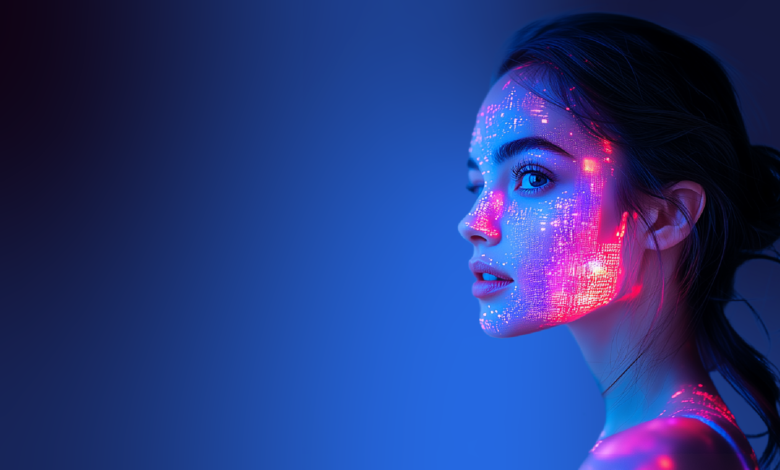From Fear to Friend: The Changing Perception of AI
Understanding how AI is reshaping work, creativity, and daily life


Artificial Intelligence, or AI, has quietly become part of our daily lives. But if we rewind a few years, the word “AI” mostly sparked fear. People imagined a future where machines would steal jobs, end creativity, and make human skills less valuable.
Today, things feel very different. AI is no longer seen only as a threat. Instead, it has become a tool we reach for whether we need quick answers, fresh ideas, or even a second opinion before visiting a doctor.
Let’s walk through how this perception changed, why people feared AI in the first place, and what role it plays in our lives now.
The Early Fear: Will AI Take Our Jobs?
When AI tools first started gaining attention, people worried about job loss.
- Artists and painters thought: “If AI can create paintings in seconds, will anyone value my art?”
- Photographers feared editing apps and image generators might make their skills irrelevant.
- Editors and designers wondered if machines would do their work faster and cheaper.
The worry wasn’t limited to creative fields. Office workers, customer support agents, and factory employees also felt insecure. Media reports with headlines like “Millions of jobs will disappear due to AI” added fuel to the fire.
At that time, AI looked more like a competitor than a helper.
The Turning Point: From Threat to Assistant
But with time, the reality became clearer. AI wasn’t wiping humans out; it was assisting them.
- Writers began using AI to generate ideas when they felt stuck.
- Designers used AI to draft layouts but still gave projects their creative finish.
- Doctors used AI tools for faster reports, but human judgment remained essential.
This shift changed the question from “Will AI replace me?” to “How can AI make me better at my work?”
Everyday AI: How It Became Normal
Today, AI blends into our lives so smoothly that we often don’t notice it.
- Students use AI to summarise lessons, prepare flashcards, and practise problems.
- Professionals rely on it for emails, presentations, and data analysis.
- Small businesses use AI for social media posts, marketing ideas, and customer queries.
- Families ask Alexa or Google Home for reminders, recipes, or weather updates.
- Shoppers see personalised product suggestions on Amazon or Flipkart.
- Travellers use Google Maps, which predicts traffic with AI.
- Entertainment lovers watch shows suggested by Netflix’s AI-driven recommendations.
From education to shopping, AI has become the background assistant we didn’t know we needed.
The Big Question: Is AI Replacing or Transforming Jobs?
The truth lies in the middle.
Where AI Has Replaced Work
- Data entry roles have reduced.
- Chatbots now handle many simple customer queries.
- Short, repetitive content (like product descriptions) can be generated automatically.
Where AI Has Transformed Work
- Designers still add the creative vision, even if AI drafts samples.
- Teachers still guide students emotionally, even if AI creates practice tests.
- Doctors still make life-saving calls, even if AI scans reports.
New Jobs Created by AI
- AI trainers improve machine learning models.
- Prompt engineers specialise in asking the right questions.
- AI ethicists focus on fairness and responsible use.
So while some tasks disappear, new opportunities rise. Rather than replacing people, AI is reshaping how we work.
Real-Life Stories That Show the Shift
- Healthcare: AI tools now help detect diseases like cancer earlier. Doctors say it makes treatment faster not redundant.
- Education: Learning apps use AI to personalise lessons, but teachers remain central to guiding students.
- Workplace: Marketing teams use AI for campaign drafts, yet final strategies still depend on human culture and empathy.
These stories show a balance AI assists, but humans still lead.
Why People Trust AI More Today
In the beginning, AI felt like a cold, machine-driven tool. Today, it feels more like a companion.
- Before visiting a doctor, many people ask AI about symptoms.
- Before travelling, they ask AI to plan itineraries.
- Before starting a project, they brainstorm with AI for ideas.
The trust comes from experience. AI saves time, gives instant results, and acts like a support system. People may not trust it blindly, but they no longer see it purely as a threat.
Looking Ahead: AI’s Future in Our Lives
AI is still evolving. The future could bring:
- Better healthcare systems that detect problems early.
- AI tutors for personalised one-on-one learning.
- Business assistants that plan strategies automatically.
But challenges remain:
- Ethics: preventing bias and misinformation.
- Privacy: protecting sensitive personal data.
- Over-reliance: ensuring humans still think critically.
The real question is not “Will AI take over?” but “How will we use AI wisely?”
Conclusion: Humans and AI Together
Our perception of AI has changed dramatically. From fear of job loss to everyday dependence, AI has moved from enemy to partner.
It’s true that it automates tasks, but it also opens new doors. It doesn’t replace imagination, empathy, or wisdom, it strengthens them.
The story of AI is also the story of human adaptability. Those who learn to work with AI will move ahead. The future is not about humans versus AI. It is about humans with AI, building a world where technology supports human growth.
BY- RINAL RATHI




